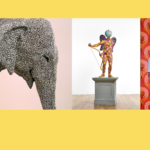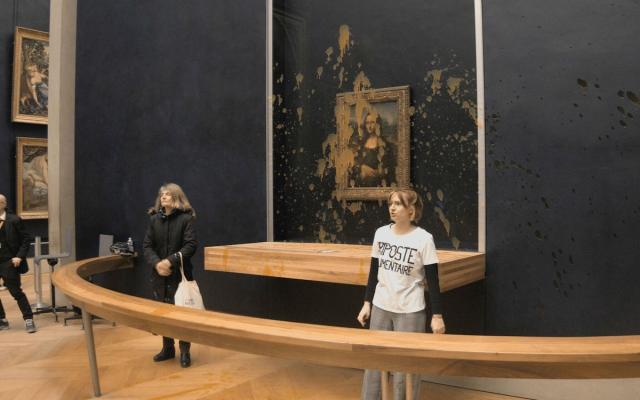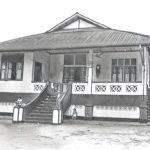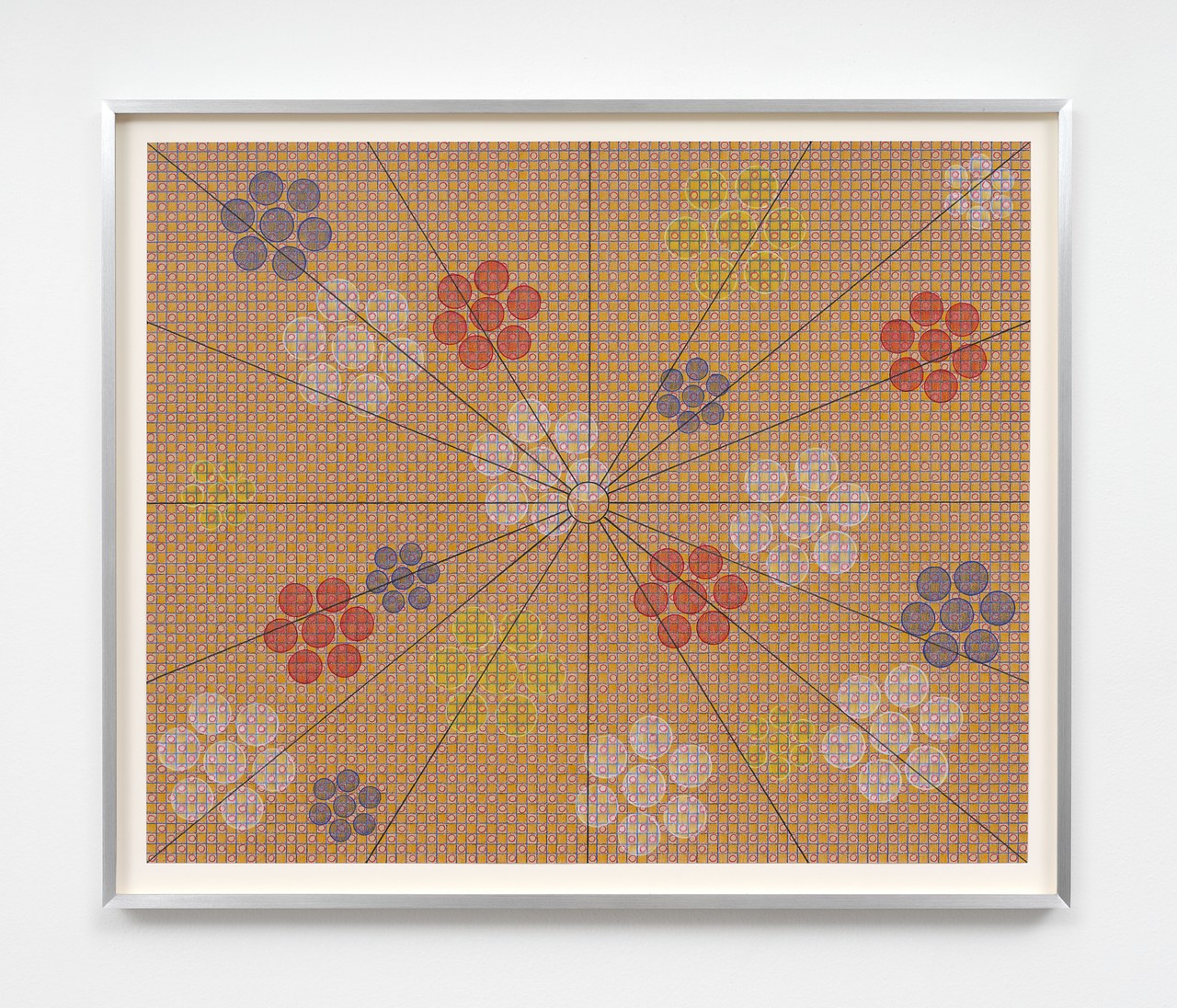Blindfold Receptor (caterpillar-yellow)
2019 - Sculpture (Sculpture)
240 x 66.2 x 38 cm
Leelee Chan
Blindfold Receptor (caterpillar-yellow) by Leelee Chan is inspired by the camouflaging nature of the peppered-moth caterpillar. In 1800s Europe, during the industrial revolution, light-colored moths evolved into a darker color after trees in their habitat darkened by the polluting soot. Today, due to rapid human changes to the environment, caterpillars can adapt even before they metamorphose into moths, mimicking the colour of the branches they inhabit. Having evolved a mechanism to gain visual information about their surroundings, caterpillars can “see” with their skin and alter their colors accordingly. This complex phenomenon indicates a kind of synaesthesia in the evolution of the species, as the skin becomes at once a site of perception and transformation for tactile and visual data. Chan’s work is a hybrid object of industrial materials that translates the mutant nature of the caterpillar. The synesthetic skin of the animal is evoked by the changing surface of a tall chain of omni-wheels; a multi-directional roller mechanism widely used in robotics, manufacturing, and logistics, to accelerate productivity and efficiency in an increasingly automated world. The artist has meticulously assembled a pattern of omni-wheels to appear as an architectural ‘skin’. The work explores the co-existence between nature and human inhabitants in post-industrial urban environments. People are encouraged to touch the caterpillar-omni-wheels and take part in this multi-directional evolution.
Working in sculpture, Leelee Chan’s visual vocabulary reflects her subjective experience of the extreme urbanization in Hong Kong by proposing a dialogue between concrete materiality, found in heavy industry, and poetics found in ceramics, and its cultural archaeology in millinery Chinese history. Chan’s training in sculpture has allowed her to have hands-on practice in the making of each of her pieces. The structural assembling and metal welding needed for the fabrication of Chan’s works is executed by the artist herself. The artist’s work engages with wider narratives linked to science fiction, global export market, the naturalization of urban landscapes, and the environmental crisis. Chan’s sculptures often recontextualise the value of dumpster detritus, household ephemera, and mundane objects that are generally considered unmemorable or unworthy of preservation. She imaginatively explores their transformative potential and reconfigures each item according to their unique quality. Chan’s sculptures evoke architecture and anthropomorphic shapes, embedded with playful and meticulous details that slowly unfold upon closer observation.
Colors:
Related works sharing similar palette

© » ARTS EQUATOR
In a Material World: IMPART Collectors’ Show 2020 & Justice for All | ArtsEquator Thinking and Talking about Arts and Culture in Southeast Asia ArtsEquator Viewpoints Courtesy of artists January 3, 2020 By Aditi Shivaramakrishnan (1,200 words, 5-minute read) When it comes to analysing an artwork, the artist’s choice of materials can be as revelatory as other elements in suggesting what they might wish to communicate...

© » ARTS EQUATOR
Weekly Southeast Asia Radar: Protest art in Thailand; The productive pandemic | ArtsEquator Thinking and Talking about Arts and Culture in Southeast Asia ArtsEquator Radar Via Coconuts Bangkok November 26, 2020 ArtsEquator’s Southeast Asia Radar features articles and posts about arts and culture in Southeast Asia, drawn from local and regional websites and publications – aggregated content from outside sources, so we are exposed to a multitude of voices in the region...

© » MODERN MET ART
25th "Sculpture by the Sea" Brings Over 100 Artworks to Australian Coast Home / Art / Sculpture 25th Annual ‘Sculpture by the Sea’ Brings 100 Artworks to Australian Coast By Margherita Cole on December 11, 2023 Gleb Dusavitskiy, “I Believe I Can Fly.” (Photo: Tyr Liang) Once a year, part of the Australian coastline is transformed into an outdoor museum during the Sculpture by the Sea festival...

© » KADIST
Koki Tanaka
2013This artwork was part of a group of projects presented in the Japanese Pavilion at the Venice Biennale in 2013...

© » ART & OBJECT
Protesters Splash Soup on the Louvre's Mona Lisa | Art & Object Skip to main content Subscribe to our free e-letter! Webform Your Email Address Role Art Collector/Enthusiast Artist Art World Professional Academic Country USA Afghanistan Albania Algeria American Samoa Andorra Angola Anguilla Antarctica Antigua & Barbuda Argentina Armenia Aruba Ascension Island Australia Austria Azerbaijan Bahamas Bahrain Bangladesh Barbados Belarus Belgium Belize Benin Bermuda Bhutan Bolivia Bosnia & Herzegovina Botswana Bouvet Island Brazil British Indian Ocean Territory British Virgin Islands Brunei Bulgaria Burkina Faso Burundi Cambodia Cameroon Canada Canary Islands Cape Verde Caribbean Netherlands Cayman Islands Central African Republic Ceuta & Melilla Chad Chile China Christmas Island Clipperton Island Cocos (Keeling) Islands Colombia Comoros Congo - Brazzaville Congo - Kinshasa Cook Islands Costa Rica Croatia Cuba Curaçao Cyprus Czechia Côte d’Ivoire Denmark Diego Garcia Djibouti Dominica Dominican Republic Ecuador Egypt El Salvador Equatorial Guinea Eritrea Estonia Eswatini Ethiopia Falkland Islands Faroe Islands Fiji Finland France French Guiana French Polynesia French Southern Territories Gabon Gambia Georgia Germany Ghana Gibraltar Greece Greenland Grenada Guadeloupe Guam Guatemala Guernsey Guinea Guinea-Bissau Guyana Haiti Heard & McDonald Islands Honduras Hong Kong SAR China Hungary Iceland India Indonesia Iran Iraq Ireland Isle of Man Israel Italy Jamaica Japan Jersey Jordan Kazakhstan Kenya Kiribati Kosovo Kuwait Kyrgyzstan Laos Latvia Lebanon Lesotho Liberia Libya Liechtenstein Lithuania Luxembourg Macao SAR China Madagascar Malawi Malaysia Maldives Mali Malta Marshall Islands Martinique Mauritania Mauritius Mayotte Mexico Micronesia Moldova Monaco Mongolia Montenegro Montserrat Morocco Mozambique Myanmar (Burma) Namibia Nauru Nepal Netherlands Netherlands Antilles New Caledonia New Zealand Nicaragua Niger Nigeria Niue Norfolk Island Northern Mariana Islands North Korea North Macedonia Norway Oman Outlying Oceania Pakistan Palau Palestinian Territories Panama Papua New Guinea Paraguay Peru Philippines Pitcairn Islands Poland Portugal Puerto Rico Qatar Romania Russia Rwanda Réunion Samoa San Marino Saudi Arabia Senegal Serbia Seychelles Sierra Leone Singapore Sint Maarten Slovakia Slovenia Solomon Islands Somalia South Africa South Georgia & South Sandwich Islands South Korea South Sudan Spain Sri Lanka St...

© » ARTS EQUATOR
Orang Phebien: Telling the story of the Baweanese | ArtsEquator Thinking and Talking about Arts and Culture in Southeast Asia Articles Illustration: Hadi Osni August 5, 2020 Lesser known narratives involving migration in Singapore are in the spotlight with The Arts House’ latest edition of LumiNation ...

© » KADIST
Prabhakar Pachpute
2014“Dark Clouds Of The Future” is a cinematographic video animation of the abandoned gold mine in Brazil, Serra Pelada (“Naked Mountain”)...

© » KADIST
Edward Kienholz
1984Untitled (San Francisco) was made in Idaho in 1984 and was facetiously dedicated to Henry Hopkins, the then director of the San Francisco Museum of Art who added “modern” to its name...

© » KADIST
Gan Chin Lee
2019In Studies of Chinese New Villages II Gan Chin Lee’s realism appears in the format of a fieldwork notebook; capturing present-day surroundings while unpacking their historical memory...

© » KADIST
Sheroanawe Hakihiiwe
2019Perawesi / Estómago de animal / Stomach of animal by Sheroanawe Hakihiiwe exemplify his most abstract work, where he choses particular elements of a living organism to create his renditions...

© » KADIST
Natasha Wheat
2011Natasha Wheat’s Kerosene Triptych (2011) is composed of three images, one each from the digital files of the Library of Congress, the Smithsonian Institution, and the Field Museum tropical research archive...









